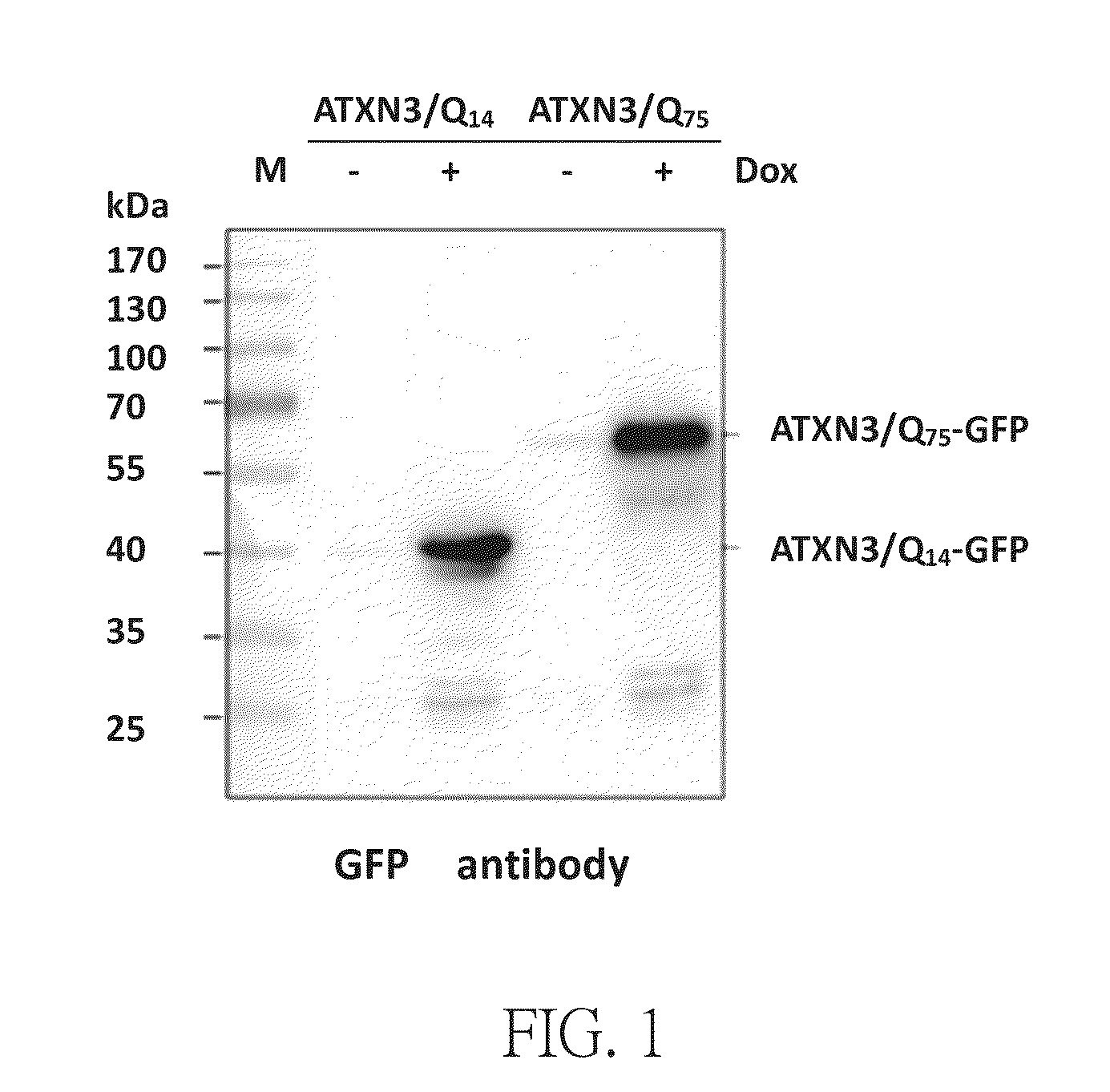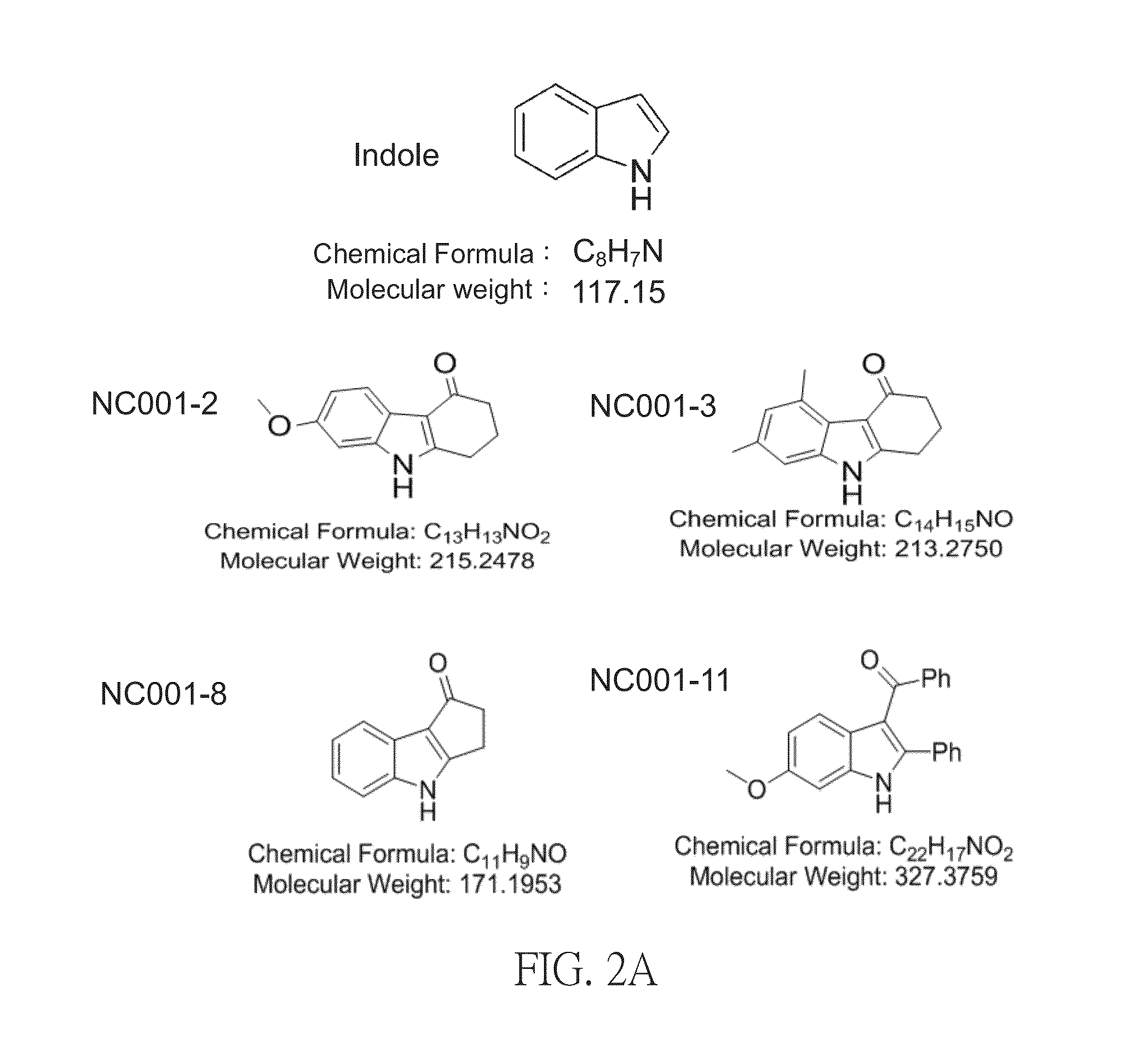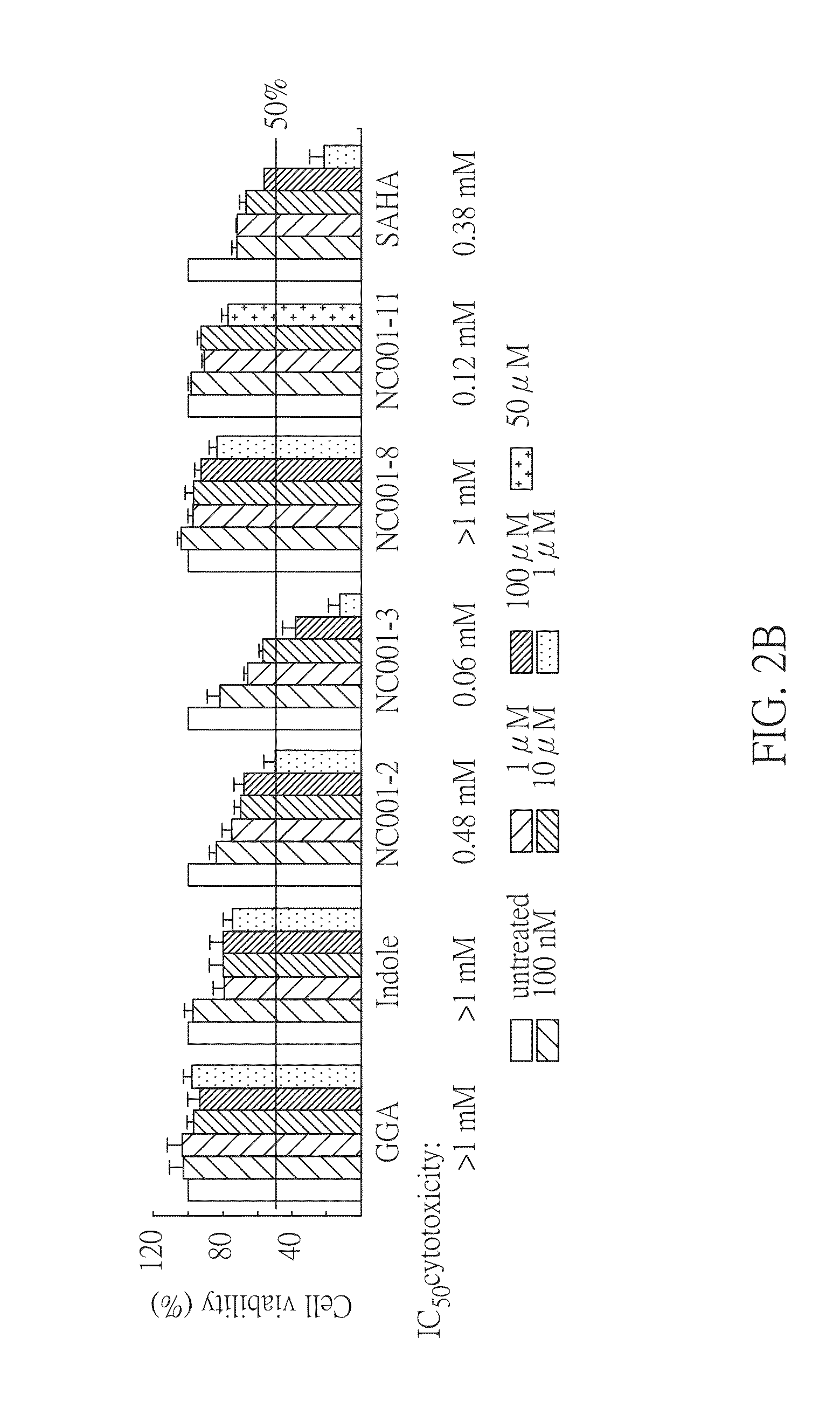Method for treating abnormal polyglutamine-mediated disease
a polyglutamine-mediated disease and polyglutamine technology, applied in the direction of biocide, heterocyclic compound active ingredients, drug compositions, etc., can solve the problems of bringing patients to an end with death, and achieve the effects of enhancing autophagy activity, reducing polyglutamine misfolding and subsequent aggregation, and enhancing chaperone activity
- Summary
- Abstract
- Description
- Claims
- Application Information
AI Technical Summary
Benefits of technology
Problems solved by technology
Method used
Image
Examples
Embodiment Construction
[0044][Indole and Derivatives Thereof]
[0045]We used indole (commercial available) and synthesized derivatives (NC001-2, NC001-3, NC001-8 and NC001-11) thereof. First, 1.0 eq. 1,3-cyclopentanedione, 1.5 eq. anhydrous potassium carbonate, and 0.5 eq. o-iodonitrobenzene were placed in proper amounts of dimethyl sulfoxide, and heated under 85-90° C. for 4 hours. After the reaction was completed, the solution was cooled down to the room temperature and then poured into ice-cold saline solution. The solution was extracted with dichloromethane several times; and liquid extract of dichloromethane was washed using ice-cold saline solution, dried out using anhydrous magnesium sulphate, filtered, and concentrated. The liquid concentrate of mixture was purified and separated by flash column chromatography, and the intermediate, 2-(o-nitrobenzene)-1,3-cyclopentanedione or 3-hydroxy-2-(2-nitrophenyl)cyclopentenone, which are co-existed structural isomers, was obtained.
[0046]Next, 1.0 eq. 2-(o-nit...
PUM
| Property | Measurement | Unit |
|---|---|---|
| pore size | aaaaa | aaaaa |
| real time PCR | aaaaa | aaaaa |
| concentration | aaaaa | aaaaa |
Abstract
Description
Claims
Application Information
 Login to View More
Login to View More - R&D
- Intellectual Property
- Life Sciences
- Materials
- Tech Scout
- Unparalleled Data Quality
- Higher Quality Content
- 60% Fewer Hallucinations
Browse by: Latest US Patents, China's latest patents, Technical Efficacy Thesaurus, Application Domain, Technology Topic, Popular Technical Reports.
© 2025 PatSnap. All rights reserved.Legal|Privacy policy|Modern Slavery Act Transparency Statement|Sitemap|About US| Contact US: help@patsnap.com



